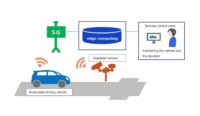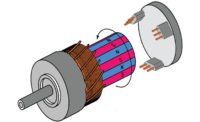Engineers Study How Rain Affects Lidar Sensors

COVENTRY, England—Engineers at the University of Warwick’s Intelligent Vehicles Group (WMG) are using simulation to test how lidar sensors react during wet weather driving conditions. The goal is to improve the technology so that it can be safely used on autonomous vehicles.
Lidar sensors work by emitting numerous narrow beams of near-infrared light with circular and elliptical cross sections that reflect off objects in their trajectories and return to the detector. However, one problem with the technology is degradation of its performance in rain.
“If a lidar beam intersects with a raindrop at a short distance from the transmitter, the raindrop can reflect enough of the beam back to the receiver, therefore detecting the raindrop as an object,” says Valentina Donzella, Ph.D., an associate professor at WMG. “The droplets can also absorb some of the emitted light, degrading the range of performance for the sensors.
Using the WMG 3xD simulator, Donzella and her colleagues tested lidar sensors in different intensities of rain, “driving” around a simulation of real roads in and around Coventry. Using different rain models ranging from none to different intensities, they made it “rain” and measured the sensor’s responses to the rain, making a record of false positive and false negative detections.
They found that as the rain intensity increased, it became more difficult for the sensors to detect objects. In a short range from the vehicle (up to 50 meters), several rain drops were erroneously detected. However, in a medium range (50 to 100 meters), this decreased. But, as rainfall increased to up to 50 millimeters per hour, the sensor’s detection of objects decreased in conjunction with a longer range in distance.
“Ultimately, we have confirmed that the detection of objects is hindered to lidar sensors the heavier the rain and the further away they are,” says Donzella. “This means that future research will have to investigate how to ensure lidar can still detect objects sufficiently in noisy environments.
“The real-time sensor and noise models will help to further investigate these aspects,” explains Donzella. “[They] may also inform autonomous vehicles manufacturers’ design choices, as more than one type of sensor will be needed to ensure a vehicle can detect objects in heavy rain.”
Looking for a reprint of this article?
From high-res PDFs to custom plaques, order your copy today!





